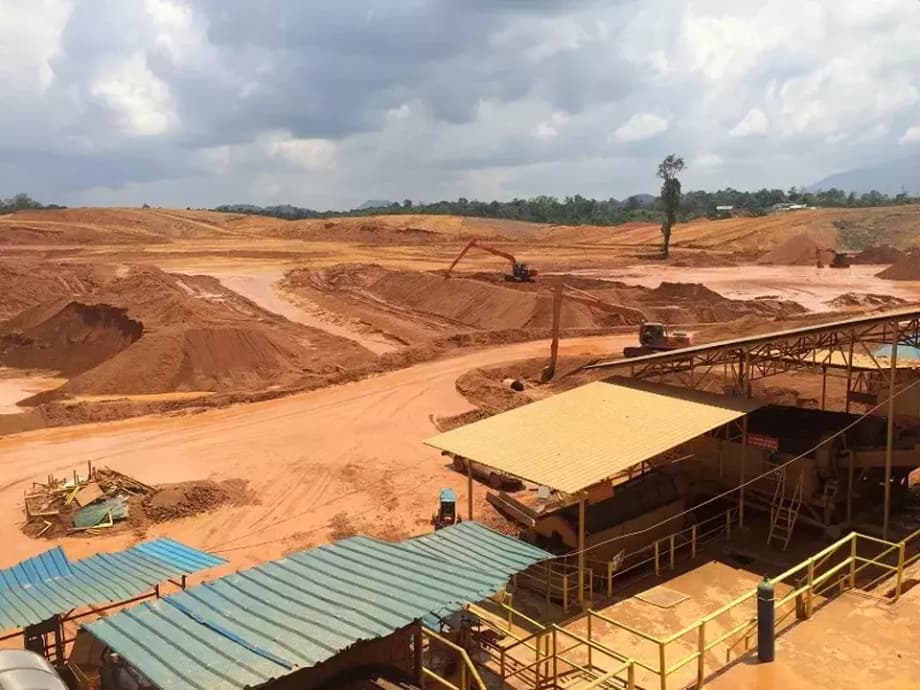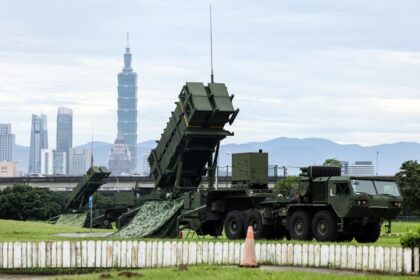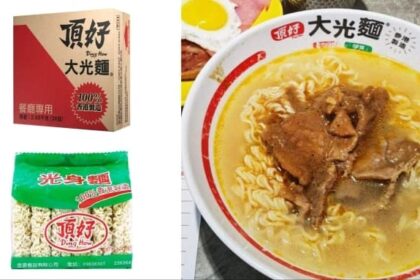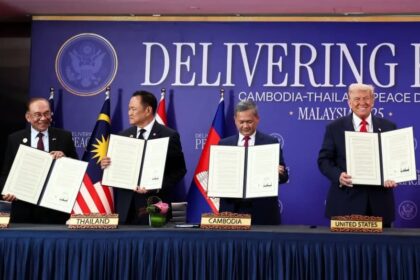Why Jakarta Is Betting on Refining at Home
Indonesia’s bauxite export ban, in force since June 2023, is a cornerstone of a national push to process minerals at home rather than ship raw ore abroad. The policy aims to create jobs, draw large investment into refining and smelting, and anchor parts of the global aluminum and electric vehicle supply chains inside the country. Officials argue that Indonesia has long exported low value ore and then imported higher value products such as alumina and aluminum. The ban seeks to flip that pattern by making investors build refineries domestically, so more of the value stays in Indonesia.
- Why Jakarta Is Betting on Refining at Home
- What the Ban Covers and How It Works
- Progress and Capacity Gaps
- Strains on Miners and Local Economies
- Financing and Project Bottlenecks
- Policy Tweaks and Talk of Easing
- Global Market Ripple Effects
- Lessons From Nickel and Regulatory Uncertainty
- Outlook for 2025 to 2027
- Key Points
Energy and Mineral Resources Minister Bahlil Lahadalia frames the policy as a practical response to rising domestic demand. Indonesia’s appetite for aluminum products exceeds local industrial capacity, so the country still imports many bauxite derivatives. The government wants private capital to close that gap by building modern plants. Authorities have set ambitious investment targets for downstream minerals and coal processing worth about 8 billion dollars, with billions already committed in recent years. The approach follows a precedent from nickel, where forbidding raw ore exports helped spur construction of processing facilities and lifted export values.
What the Ban Covers and How It Works
The 2023 decision bans shipments of unprocessed bauxite ore and washed bauxite. It is rooted in the 2009 Mining Law, which requires domestic value addition before export. Indonesia first tried a blanket prohibition on raw mineral exports in 2014, then relaxed the rules in 2017 to avoid choking off production while new plants were built. President Joko Widodo announced the renewed bauxite ban in late 2022, knowing that the policy would mean short term pain, including lost export revenue, but arguing that the longer term benefits would outweigh the costs. The same calculus guided the earlier nickel policy that led to large growth in downstream processing and export value.
Beyond jobs and investment, Indonesia wants strategic leverage in industries that rely on aluminum and alumina. Bauxite is the starting point for alumina, which is then smelted into aluminum used in transport, construction, electricity transmission, packaging, and increasingly in lightweight components for electric vehicles. Having a strong domestic base would help local manufacturers and could draw new projects into places with bauxite deposits such as West Kalimantan.
Progress and Capacity Gaps
The transition from ore exporter to processor is under way, but the capacity to refine bauxite into alumina still trails the supply of ore. Officials have cited total installed capacity to process bauxite ore at around 17.5 million tons per year, a figure that is well below the country’s needs when measured against demand for alumina and aluminum products. On the refinery side, only a handful of plants are operating, and they do not yet absorb all the ore that miners can produce.
Current smelter map
Four alumina facilities are reported to be in operation today, with combined capacity near 4.3 million tons of alumina per year. The government has urged companies to complete eight more alumina projects that, if finished, could consume roughly 24.5 million tons of bauxite and yield about 8.5 million tons of alumina each year. Those projects would represent a step change for the sector. In parallel, state owned aluminum producer Inalum has partnered with Emirates Global Aluminium to lift metal output, targeting up to 1 million tons of aluminum capacity in the coming years.
Mismatch between ore and alumina
Indonesia can mine well over 20 million tons of bauxite annually. Associations have said production potential has reached about 30 million tons in some years, while operating alumina plants can only absorb a fraction of that amount. The conversion ratio matters. It takes several tons of bauxite to produce one ton of alumina, depending on ore grade, often a range around three to four tons of bauxite per ton of alumina. Analysts and lawmakers have warned that without more refinery capacity, a domestic bauxite surplus is inevitable. In 2025, approved mine plans point to 12 to 15 million tons of bauxite production, yet operational alumina capacity of about 5.3 million tons would still require around 16.5 million tons of bauxite at full run, leaving a narrow margin that can quickly turn into a surplus if refineries run below nameplate levels.
Strains on Miners and Local Economies
Miners say the gap between ore supply and refinery intake has squeezed their finances. With exports closed and few domestic buyers, inventories have grown and prices inside Indonesia have fallen. Companies have cut output or paused operations to manage cash and reduce losses. Business groups warn that prolonged shutdowns will hurt workers and local suppliers, especially in West Kalimantan and other producing regions, where mine activity underpins livelihoods and regional economies.
Industry voices have asked the government to consider a price floor for domestic bauxite sales so miners can cover costs while refineries scale up. That proposal would force alumina plants to pay at least a set price for ore. Supporters argue a price floor could prevent a race to the bottom that would destabilize mining companies and lead to layoffs. Officials acknowledge the imbalance and say curbing production is one way to manage the surplus until more refineries come online, though miners counter that such cuts put payrolls and community programs at risk.
Financing and Project Bottlenecks
Financing is the biggest obstacle to closing the refinery gap. Seven major alumina projects in Kalimantan are delayed, leaving large planned capacity still on paper. Developers report difficulty securing loans from Indonesian and foreign banks. Investors also face higher upfront costs, longer construction timelines, and complex requirements for reliable power, port access, caustic soda, and other inputs that alumina refining demands.
Ronald Sulistyanto, the chairman of the Indonesian Bauxite and Iron Ore Entrepreneurs Association, has repeatedly warned that the cost profile of alumina projects deters lenders compared with faster paying nickel ventures. He argues that companies are stuck in limbo without policy support that unlocks financing.
“Building a bauxite smelter unit requires a capital expenditure of US$1.2 billion,” Ronald Sulistyanto said, adding that banks have been unwilling to provide the funds needed to move projects forward.
Mineral projects often hinge on regulatory clarity. Developers say frequent rule changes and uncertainty over export permissions, licensing, and pricing make banks cautious. Several named projects remain idle ground while sponsors look for partners and secure land, power, and environmental clearances. One Kalimantan project stalled after its mining license was revoked, underscoring the importance of predictable permitting for lenders who must assess risk over a 15 to 20 year horizon. Energy supply is another constraint. Alumina refineries consume large amounts of electricity and heat. Building generation capacity near mines or ensuring stable grid connections raises capital needs and can slow construction.
Policy Tweaks and Talk of Easing
Reports have circulated since mid 2024 that officials might relax the bauxite export ban to ease pressure on miners while refinery capacity catches up. Market participants say allowing some exports would help absorb excess ore and restore income for producers. Others fear that opening the door to exports could undercut domestic refineries, which might end up competing with buyers abroad for feedstock at higher prices. For now, the ban remains, and the policy focus has shifted to domestic pricing and absorption.
Minister Bahlil has kept the emphasis on processing at home, signaling that the government will not walk away from the downstream strategy. He has explained the rationale in practical terms many times.
“Indonesia still imports many bauxite derivatives like aluminum because domestic demand is higher than industrial capacity, so investors need to build bauxite smelters in the country,” Energy and Mineral Resources Minister Bahlil Lahadalia said.
In 2025, the Energy and Mineral Resources Ministry introduced a domestic benchmark pricing mechanism known as HPM for minerals and coal. The rule requires sales at or above a government formula. The idea is to ensure fair value for the state and encourage investment. Large miners say the formula sits above what refineries are willing to pay, which has jammed the market.
PT Aneka Tambang, the state owned mining company known as Antam, told lawmakers that buyers are declining to purchase bauxite under HPM. The company warned that all sales of washed bauxite and even ferronickel had halted at the start of April, with knock on effects for state royalties and cash flow.
“Buyers and smelters are unwilling to pay the benchmark price, so sales are not economical. HPM is too high and it removes the flexibility of business to business pricing,” Antam President Director Nico Kanter said during a parliamentary hearing.
Miners and refineries are urging the government to recalibrate HPM, widen discounts for long term supply contracts, or phase the policy to reflect the evolving market. Lawmakers have asked ministries to review whether the pricing formula, intended to protect national interests, is inadvertently choking off transactions.
Global Market Ripple Effects
Indonesia’s policy choices have global consequences. Before earlier restrictions, China relied heavily on Indonesian bauxite, in some years taking the bulk of its imports from the archipelago. After Indonesia stopped exporting ore, Chinese buyers diversified to Australia, Guinea, Malaysia, and other suppliers. Guinea now dominates China’s import mix. Any shift by Indonesia to allow partial exports would change trade flows again. Analysts estimate that 16 million tons of Indonesian bauxite directed to the seaborne market could translate into 4 to 5 million tons of alumina production elsewhere, enough to offset a portion of current global shortages.
Global alumina markets have been volatile. Australia has seen refinery disruptions and closures. In 2024, operations in Guinea faced interruptions, including a suspension of exports by a major producer. These shocks lifted alumina prices to multi year highs and underlined how concentrated the supply chain has become. For Indonesia, this context cuts two ways. Strong external demand would likely absorb any surplus if exports were permitted. At the same time, tight markets improve the case for building domestic refineries that can sell into high priced conditions.
On the aluminum side, Indonesia’s downstream ambitions intersect with electric vehicle and renewable energy growth. Aluminum offers strength and light weight for cars, aircraft, and power infrastructure. If Indonesia can align ore output, alumina refining, and power supply for smelting, the country could move deeper into higher value products. Partnerships with established players, as seen in plans involving Inalum and Emirates Global Aluminium, show how technology and capital can accelerate that shift if projects reach financial close.
Lessons From Nickel and Regulatory Uncertainty
The nickel experience shows what is possible. Export value in nickel climbed sharply after Indonesia forced processing at home, attracting foreign investment into smelters and allied industries. The rise in refined output helped seed battery materials supply chains. Policymakers hope bauxite will follow a similar trajectory, adding alumina refining, more aluminum metal capacity, and downstream manufacturing of rolled and extruded products.
There are differences. Nickel projects generally reached financial close faster, and the economics of high pressure acid leach and rotary kiln electric furnace lines often delivered quicker payback than alumina refineries. Bauxite requires massive and sustained inputs of power and materials. The industry also remembers the policy whiplash between 2014 and 2017, when Indonesia briefly allowed ore exports before tightening again. Investors and banks weigh that history when evaluating project risk. Greater clarity on rules, pricing, and licensing is often the deciding factor for large, capital intensive refineries.
Indonesia has also faced legal friction abroad over its resource policies, including a dispute at the World Trade Organization about nickel restrictions. The government has stood by the strategy, emphasizing economic sovereignty and domestic value creation as national goals. A consistent, transparent regulatory timeline for bauxite could reduce uncertainty premiums and lower financing costs.
Outlook for 2025 to 2027
The next two years are pivotal. If stalled alumina projects can reach financing agreements, Indonesia’s operational capacity could climb toward 10 to 12 million tons of alumina by 2027. That would absorb a much larger share of domestic bauxite and ease pressure on miners. Market estimates suggest a rebalancing window of 18 to 24 months if projects restart and construction proceeds without major delays. Bridging the funding gap is essential. Options include blended finance, clearer fiscal incentives, improved power supply road maps, and pragmatic adjustments to domestic pricing rules that let mines and refineries transact while still meeting state objectives.
In the meantime, production planning will remain delicate. Approved mining quotas for 2025 point to 12 to 15 million tons of bauxite. Operating refineries require around 16.5 to 18.5 million tons of ore at full utilization, yet many plants have run below peak levels during ramp up. Regional authorities and the central government will need tight coordination to avoid either starving refineries of ore or letting mine inventories balloon. If controlled export windows are ever introduced, the volumes would need to be calibrated carefully to protect domestic buyers.
Indonesia’s long run goal is unchanged. The country wants to move up the value chain, from raw ore toward alumina and aluminum, and eventually finished aluminum products. The bauxite ban is one tool to get there. Strategic financing, steady regulation, and reliable infrastructure are the others. If policymakers and investors can align those pieces, the aluminum industry could follow nickel’s trajectory, though on a different timetable.
Key Points
- Indonesia has banned bauxite ore exports since June 2023 to force domestic processing and capture higher value inside the country.
- Installed alumina capacity is still limited, with four operating refineries around 4.3 million tons per year and several delayed projects in Kalimantan.
- Miners face a domestic surplus of bauxite because refinery intake lags ore production, pressuring prices and cash flow.
- Industry groups have proposed a price floor and easier financing to protect jobs and keep mines operating while new refineries are built.
- Financing is the main bottleneck, with banks reluctant to fund large alumina projects without clearer rules and stable power supply.
- The government introduced domestic benchmark pricing in 2025, but miners say the formula is too high and has stalled transactions.
- State owned miner Antam reported halting bauxite sales in April 2025 as buyers refused benchmark prices, affecting royalties and revenue.
- Talk of easing the export ban has surfaced, yet officials remain committed to building a domestic aluminum value chain.
- Global alumina supply disruptions in Australia and Guinea have lifted prices, increasing the stakes of Indonesia’s decisions.
- If delayed projects proceed, Indonesia could approach 10 to 12 million tons of alumina capacity by 2027, narrowing the ore surplus and supporting broader industrial goals.












